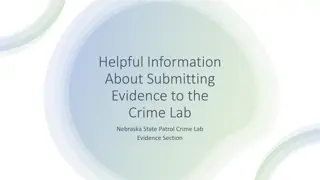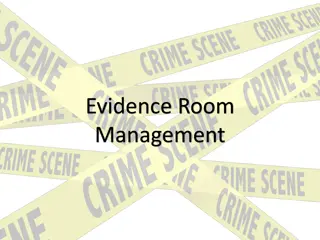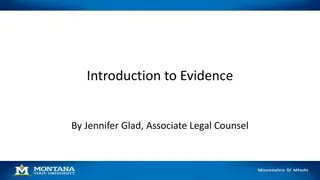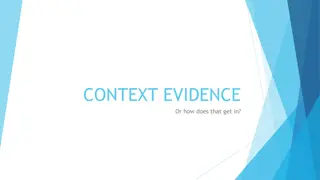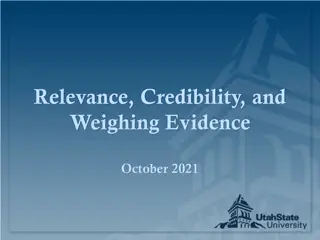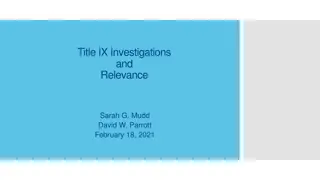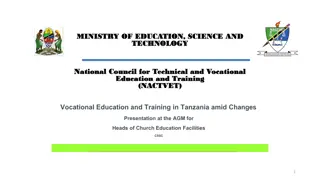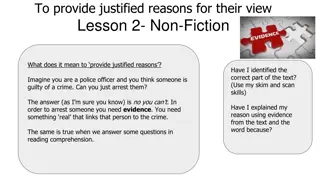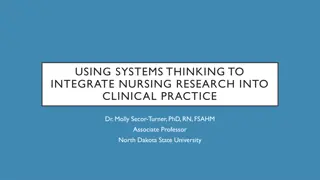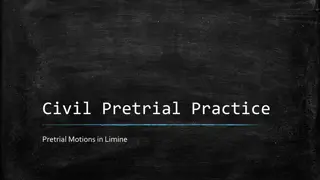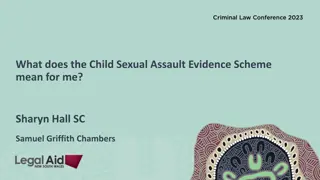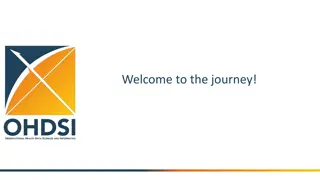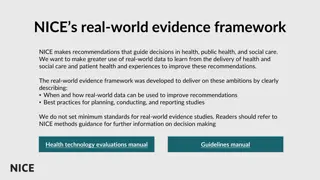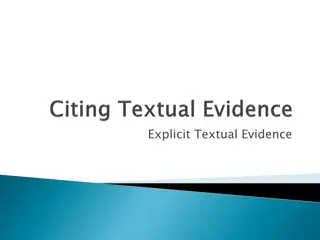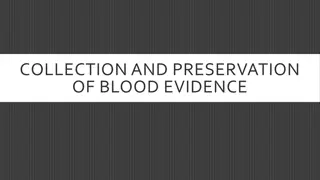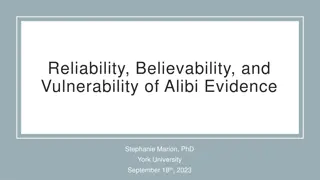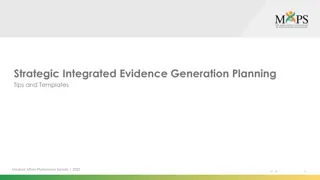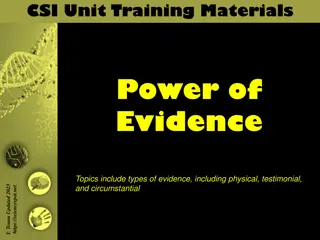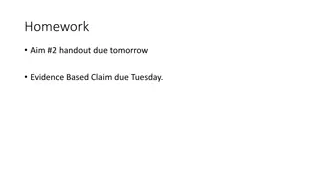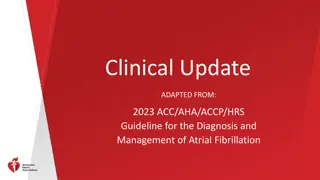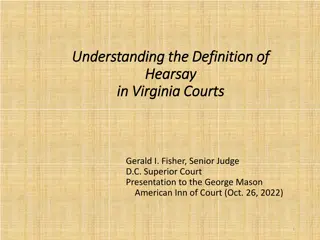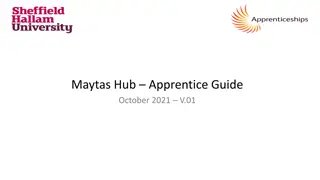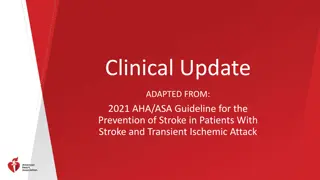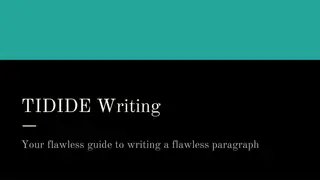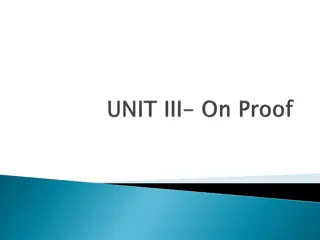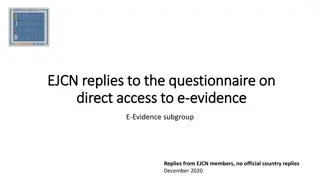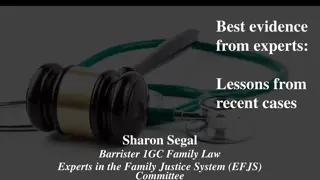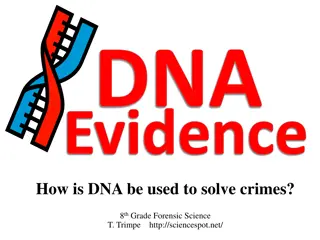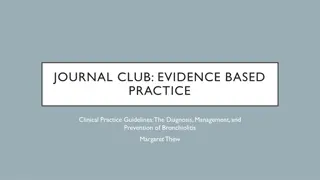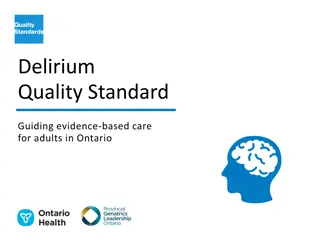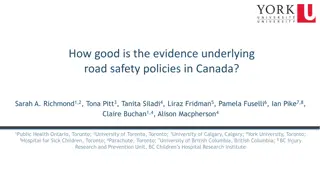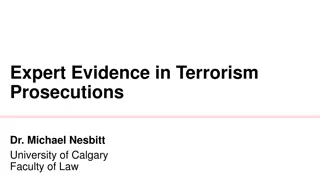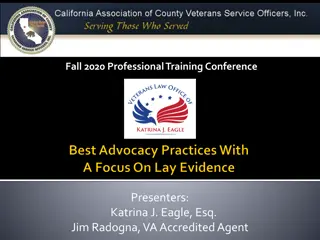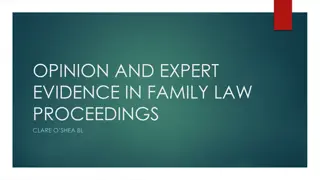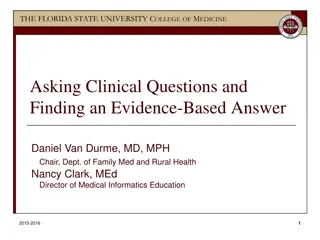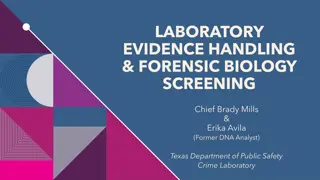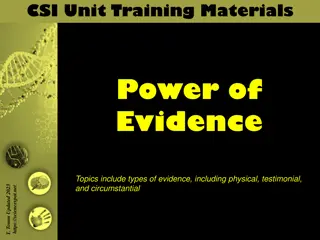Enhancing Evidence Collection in Education
Explore the importance of minimizing bias in evidence collection, review different types of evidence, identify strategies to collect quality evidence effectively, understand common biases affecting assessment, and learn to spot and address biased statements. Practice eliminating biased language and focus on objective observations to enhance the evaluation process in educational settings.
Download Presentation

Please find below an Image/Link to download the presentation.
The content on the website is provided AS IS for your information and personal use only. It may not be sold, licensed, or shared on other websites without obtaining consent from the author. Download presentation by click this link. If you encounter any issues during the download, it is possible that the publisher has removed the file from their server.
E N D
Presentation Transcript
Observations Preparing and Collecting Quality Evidence
Learning Goals Understand the impact of bias Review the 4 types of evidence Identify and collect quality evidence
Understanding Bias: The 5 Issues Rater Personal Bias Halo and Pitchfork Effect Error of Central Tendency Error of Leniency Rater Drift Article
Take the time to review Scripting can be fast and furious Look for bias statements Clean up any confusing or opinion statements
Types of Evidence Direct Observation the evaluator is physically present or using appropriate technology to observe the teacher or leader performing essential job functions. Indirect Observation the evaluator observes systems that operate as a result of a teacher s research, planning, and implementation inside the classroom or in a work-related environment outside of the classroom. Artifacts Materials that document the educator s professional practice. Data Teacher performance Student performance Overall school performance
Collecting Quality Evidence Remember to be non-biased Leave little to perception or interpretation Focus on what you see Focus on what you hear Qualitative (verbatim, interaction, anecdotal, etc.) Quantitative (numbers, frequency, tallies, checklist, etc.)
Be Betterest You are clearly passionate about your subject! Teacher had to redirect the students attention multiple times Students appear on task from the moment they walk in the door. Students groups are conducive to the task.
Words or Phrases to Retire ______ was good. That was a good bell ringer. Good use of time. Johnny was good during the lesson. _____ liked ______ I liked the way you read the story. Students liked the activity Jesse liked playing in the art center
Lets Practice The class was seated in a horseshoe seating arrangement. This allowed the students to see each other and the teacher. The lesson began with T reminding the students of the worksheet they completed the day before. A number of Ss actively engaged in this discussion and the teacher allowed this discussion to flow. Bell Ringer activity was positive DOK Level Questions: Level 1: 8 Level 2: 2 Level 3: 1 Students are too talkative and loud throughout the lesson. T accepted Ss recall and interpretation and praised every student for their input using words such as Great job, Well done, and That s awesome. T asked the students to read the poems silently. While the students were reading, T walked around the room to ensure that they were engaged in the process. Ss enjoyed the game used for test review. 15/18 students were called to respond to questions during the lesson.
Recap Understand your biases 4 Types of Evidence What is quality evidence Questions???
Email Kim.wright@ade.Arkansas.gov Phone 501-683-6285 Website https://dese.ade.arkansas.gov/Offices/educator-effectiveness/educator-support-- development/teacher-excellence-and-support-system-tess





